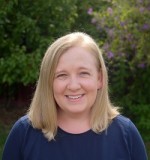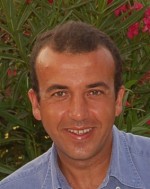
Performance Perspective on Function Virtualization for Small Cells in 5G cellular Networks
Abstract
Trade-offs in latency, throughput, and complexity as a function of network function virtualization strategy for delivery of data services to users wirelessly tethered to 5G networks via small cells are discussed. An overview of network architecture that illustrates the role of small cells in 5G is presented. That overview is followed by a description of services that are expected to be supported over small cell connections and the networking services and functions that are needed to support those services. Mechanisms for achieving high data rates and functionalities needed to implement the mechanisms will be discussed. Alternatives for network function virtualization will then be discussed, and the pros annd cons of processing functions at various points along the chain will be addressed. The talk will conclude with a discussion of open issues that need resolution in order to achieve full functionality and performance for users connected to networking services via small cells.
Bio
John N. Daigle is Professor of Electrical Engineering and Assistant Director of the Broadband Wireless Access and Applications Center at the University of Mississippi, Oxford. He was formerly a Principal Engineer for the MITRE Corporation in McLean, Virginia, where he was responsible for research direction in the MITRE Washington Networking Technical Center. His experience in electrical communications dates back to 1970 and includes experience both in industry and academia.
Prof. Daigle has taught in a wide variety of areas related to computing and communications. His research results have been published in leading IEEE technical conferences and IEEE and ORSA journals. He is also the author of the text books Queueing Theory for Telecommunications, published by Addison-Wesley and Queueing Theory with Applications to Packet Telecommunication, published by Springer-Science+Business Media.
Prof. Daigle is a Life Fellow of the IEEE and is active in that institute's activities. He has served as Editor-in-Chief of IEEE Network and IEEE Communication Surveys and Tutorials and in other editorial capacities. He served on the IEEE Communications Society's Board of Governors and has served on numerous technical program committees of IEEE conferences. He is a past chairman of the Society's Technical Committee on Computer Communications and received the 2004 Outstanding Service Award in recognition of his long-time contributions and service to the TCCC.
Prof. Daigle was a visiting researcher at IBM Zurich Research Laboratory (summers 1999-2001) and at the University of Perugia (summer 2002). More recently he was an Erskine Fellow at the University of Canterbury (summer 2009), where he taught software defined radio. He holds BS and MS degrees in electrical engineering from Louisiana Tech University and VPI & SU, respectively. His doctorate, from Columbia University, is in operations research.

Journey into an Emerging Product Space: Building Android Wear
Abstract
Mobile electronic devices are an integral part of the lives of millions (billions) of people. The next challenge is to make wearable devices a seamless and useful part of our daily lives. Ultimately, devices which help us be healthier, stay organized and connected, while at the same time looking good.
This talk provides a retrospective look at both the technical and non-technical challenges encountered while creating and growing the smartwatch market, highlighting how the approaches and lessons learned can be generally applied to entering any emerging product space.
Bio
Melissa Frank is the Hardware System Architect for Google’s Android Wear platform. Since 2012 she has been responsible for launching an ecosystem of wearable devices - focusing on the smartwatch form factor.
Prior to joining Google, Melissa led design teams working on mixed-signal automated test equipment for the semiconductor industry with focus on power analog and precision low frequency measurements. In addition, she technically managed multi-company programs that developed high speed memory and chip-to-chip interfaces for computing and game consoles. In 2008, she helped found a smartwatch start-up which later became a foundational part of Google’s Android Wear team.
Melissa has a bachelor’s degree in Electrical Engineering from Massachusetts Institute of Technology and a MBA from Harvard Business School.

Data-Plane programmability: the next step in Software Defined Networking
Abstract
Software-Defined Networking (SDN) emerged as an attempt to introduce network innovations faster and to radically simplify and automate the management of large networks. Most of the traditional SDN work promoted the neat separation of the “smart” network control and management plane from the “dumb” packet forwarding plane. However, we believe that this rigid, physical, separation is by no means a conceptual principle, but it is just the consequence of the inability to emerge, so far, with pragmatic device-level programming interfaces more expressive than OpenFlow, i.e., which permit to program and deploy inside the switch more complex and dynamic per-flow “behavioral rules” rather than static forwarding rules. In the talk, we discuss pragmatic and viable ways to formally describe stateful per flow processing while retaining platform independency and portability across different network devices and nodes. We posit that the unprecedented ability to locally deploy, in each network switch, third-party programmed platform-agnostic control functions, not only questions the rigid control/data plane separation that so far has driven SDN efforts, but rather might even pave the road towards the viable return of some “active networking” ideas in the SDN arena.
Bio
Giuseppe Bianchi is Full Professor of Networking at the School of Engineering, University of Roma Tor Vergata since January 2007. His research activity includes programmable network systems, wireless networks, privacy and security, traffic control, and is documented in about 220 peer-reviewed international journal and conference papers, having received more than 14.000 citations (source scholar.google.com). He has carried out pioneering research work on WLAN modelling and assessment, and is currently interested in network programmability in both wireless and wired domains. He has been general or technical co-chair for several major conferences and workshops (IEEE INFOCOM 2014, ACM CoNext 2015, IEEE LANMAN 2016, IEEE WoWMoM 2007 and 2010, ACM WinTech 2011, ACM SRIF 2013, track chair at IEEE PIMRC 2008, etc). G. Bianchi has held general or technical coordination roles in several European projects (FP6-DISCREET, FP7-FLAVIA, FP7-PRISM, FP7-DEMONS, H2020-BEBA, H2020-SCISSOR), and currently participates to seven EU projects on wireless, network programmability and network security topics. He has been (or still is) editor for several journals in his field, including IEEE/ACM Transactions on Networking, IEEE Transactions on Wireless Communications, IEEE Transactions on Network and Service Management, and Elsevier Computer Communications.